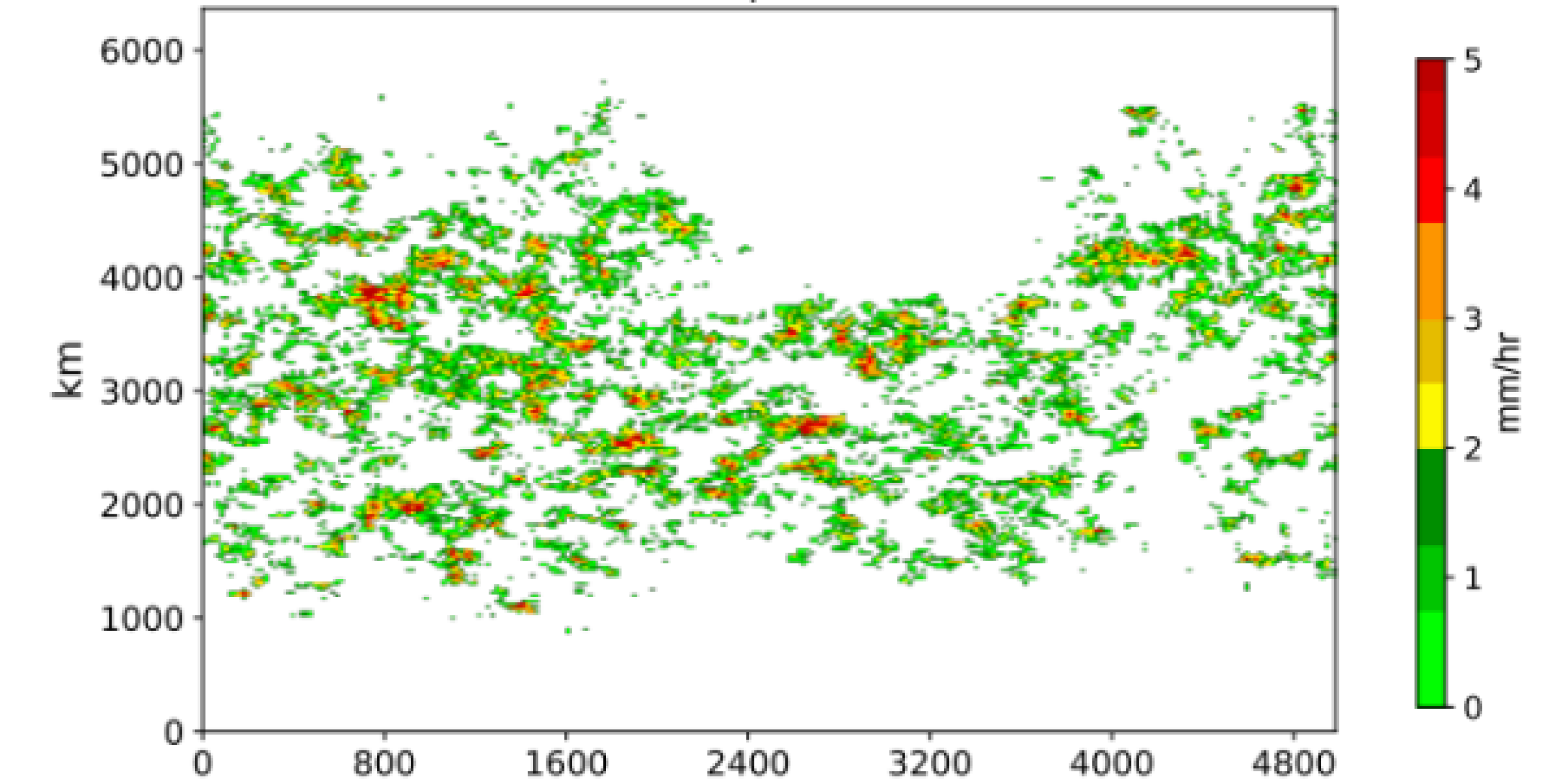Snapshot of the precipitation field from a selected time step (day 73, hour 6) in the stochastic model reference run.
Simulating precipitation is difficult due to the complexity and range of responsible atmospheric processes and technological limitations. In a new Journal of the Atmospheric Sciences paper, author Fiaz Ahmed, and MAPP-funded PI David Neelin used a two-dimensional stochastic model to reproduce observed precipitation cluster distributions, including the slope and cutoff of precipitation events. Precipitation clusters are described as contiguous raining regions depicted by a precipitation threshold, size, and the total rainfall contained within – termed the cluster power.
Observed tropical precipitation clusters suggest that the probability of both the cluster size and power of the precipitation cluster contain a power-law range bounded by a large event “cutoff”. Events with values beyond the cutoff signify large, powerful clusters and represent extreme events.
A two-dimensional stochastic model used by the authors is equipped with coupled moisture and weak temperature gradient energy equations, empirically-motivated precipitation parameterizations, temporally persistent noise, and lateral mixing processes, all of which collectively shape the model precipitation cluster distribution. This study found that the power-law slope is stable in a realistic parameter range. In addition, the “cutoff” is sensitive to multiple model parameters including the stochastic forcing amplitude, the threshold moisture value that triggers precipitation and the lateral mixing efficiency. It was also found that the stochastic process provided to be useful for simple analogs of precipitation in formulating a neighbor probability metric. This metric measures the average number of nearest neighbors that a precipitating entity can spawn per time interval and captures the “cutoff” parameter sensitivity for both cluster size and power.
The results from this study suggest that the clustering tendency and the horizontal scale limiting large tropical precipitation systems emerge from aggregate effects of multiple moist processes, which are encapsulated in the neighbor probability metric.
Cover image: Snapshot of the precipitation field from a selected time step (day 73, hour 6) in the stochastic model reference run.
To read the findings of a new MAPP funded precipitation study called “Increased Rainfall in Gulf Coast Linked to Atlantic Subtropical High”, please click here.
———————————————————————————————–
About MAPP
The Modeling, Analysis, Predictions, and Projections (MAPP) Program is a competitive research program in NOAA Research’s Climate Program Office. MAPP’s mission is to enhance the Nation’s and NOAA’s capability to understand, predict, and project variability and long-term changes in Earth’s system and mitigate human and economic impacts. To achieve its mission, MAPP supports foundational research, transition of research to applications, and engagement across other parts of NOAA, among partner agencies, and with the external research community. MAPP plays a crucial role in enabling national preparedness for extreme events like drought and longer-term climate changes. For more information, please visit www.cpo.noaa.gov/MAPP.



